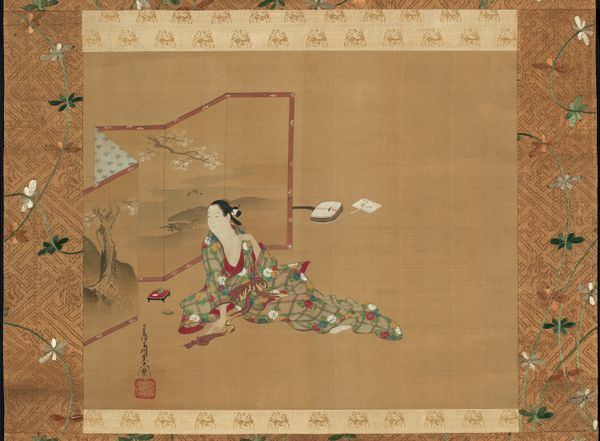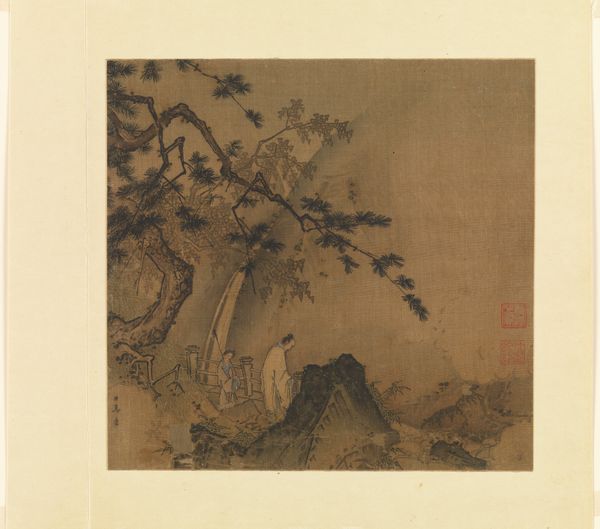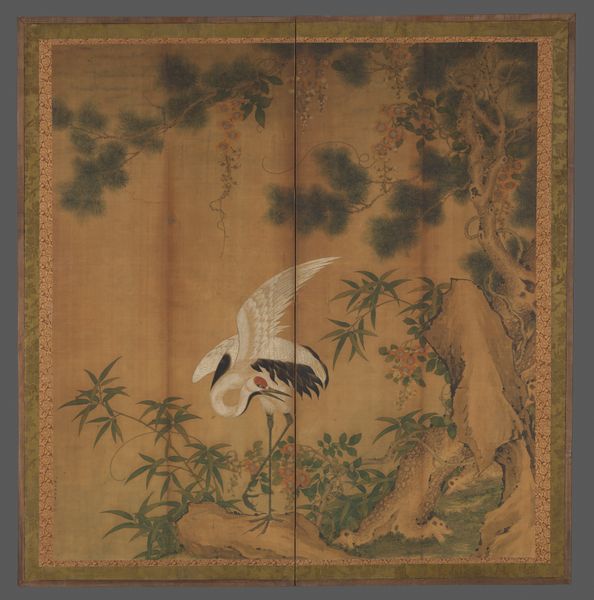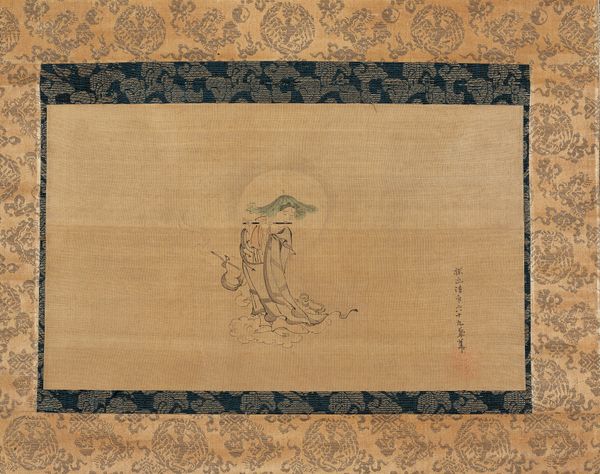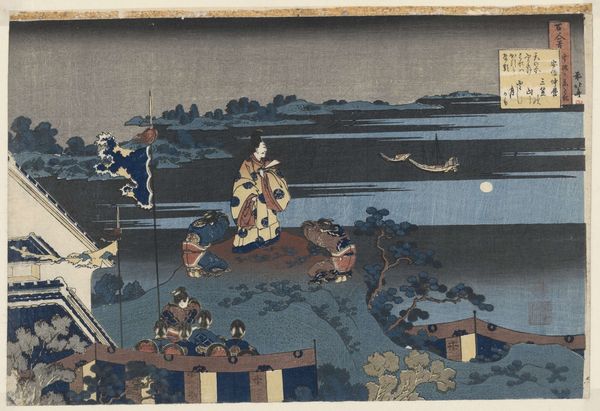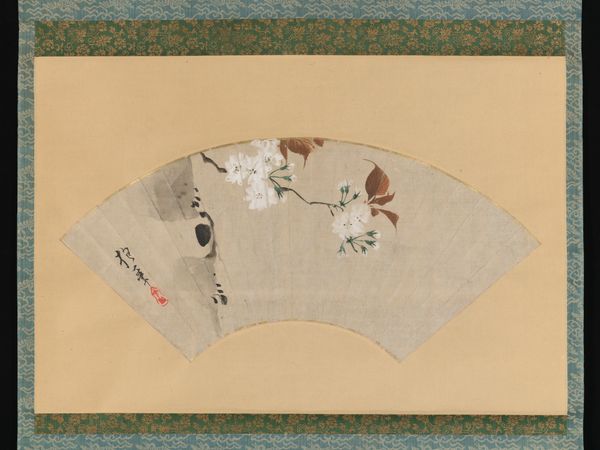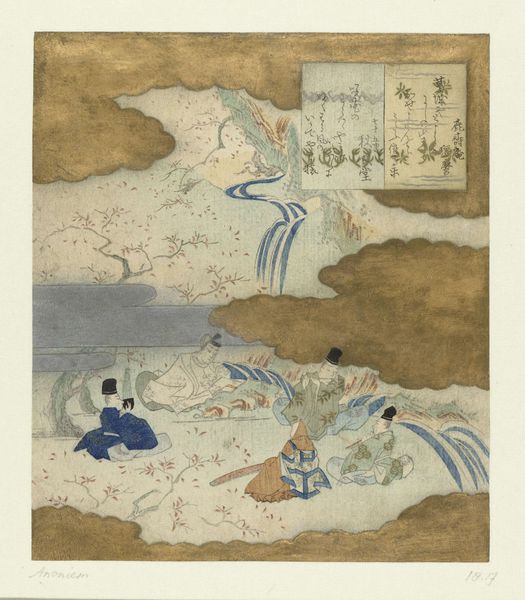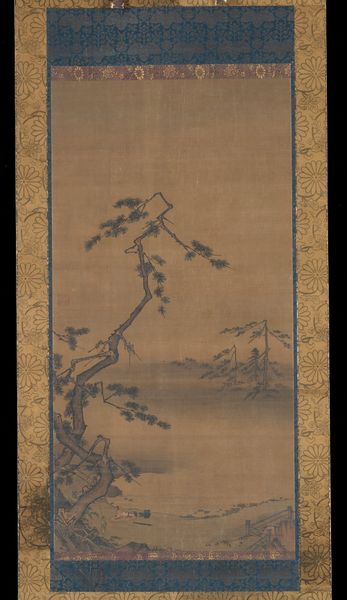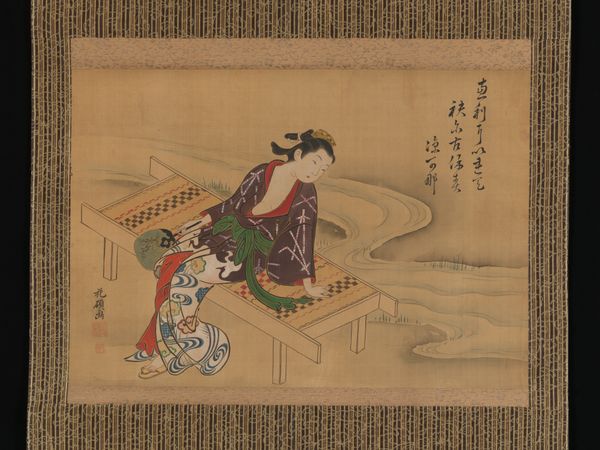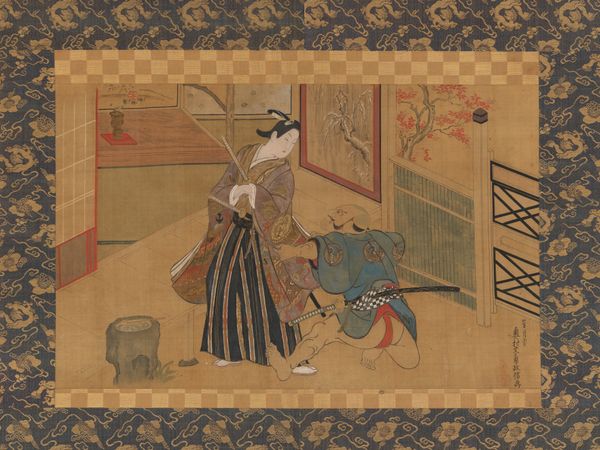
Princess Ogimi from the "Bridge Maiden" (Hashihime) chapter from The Tale of Genji (Genji Monogatari) 1700 - 1733
0:00
0:00
painting, print
#
narrative-art
#
painting
# print
#
asian-art
#
landscape
#
ukiyo-e
#
figuration
Dimensions: Image: 14 5/8 × 17 15/16 in. (37.1 × 45.6 cm) Overall with mounting: 49 1/2 × 22 7/8 in. (125.8 × 58.1 cm) Overall with knobs: 49 1/2 × 24 15/16 in. (125.8 × 63.3 cm)
Copyright: Public Domain
Curator: This hanging scroll painting is by Hishikawa Waō, created sometime between 1700 and 1733. It illustrates Princess Ogimi from the “Bridge Maiden” chapter of The Tale of Genji. Editor: My first impression is a feeling of elegant melancholy. The colors are muted, almost faded, giving it a dreamlike quality. I'm intrigued by the contrast between the precise architectural lines and the fluid, soft rendering of the landscape. Curator: That atmosphere is carefully constructed. The Tale of Genji, of course, holds a crucial place in the cultural canon. Prints like this offered a way to consume and reflect on these aristocratic narratives within broader social strata. It depicts not just a story but an entire aspirational culture. Editor: And let's not forget the sheer skill and labor involved in its production. The paper itself, the pigments carefully sourced and applied, and the carving of the woodblocks. Ukiyo-e prints democratized art to some extent, but that accessibility shouldn't obscure the expertise demanded by each stage. The print method of ukiyo-e would have allowed multiple reproductions. The materials involved in this printing is a statement in itself. Curator: Precisely! It also highlights the changing role of female figures in visual culture. Representations such as this catered to very specific markets, defining the parameters of acceptable representation in the period. She’s not necessarily powerful or active; her beauty and tragic circumstances are emphasized. Editor: You know, I wonder about the life of Hishikawa Waō, who may have worked with artisans. I'd be interested in the workshop dynamic, their access to specific materials. Where did the paper come from, who mixed the inks, and what kind of tools were employed to translate narrative into accessible image. Curator: Good questions indeed! Analyzing how these works were circulated gives us so much insight into social history. Prints moved and allowed Genji, or images of women, to influence fashion and more in urban centers like Edo. Editor: Seeing these things brought to life is a powerful testament to its cultural significance. Curator: Yes, appreciating it requires us to look beyond its beauty and explore the complex relationship it had with shaping both aesthetics and behavior.
Comments
No comments
Be the first to comment and join the conversation on the ultimate creative platform.
